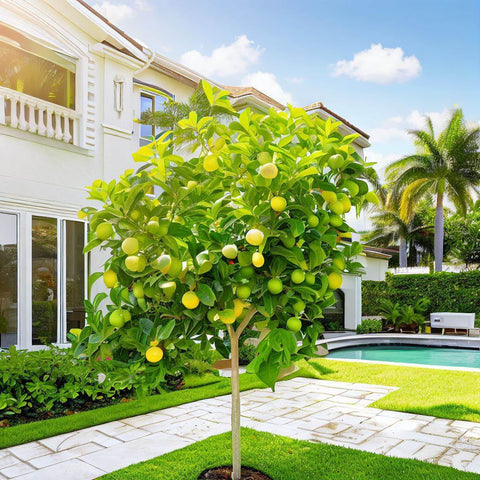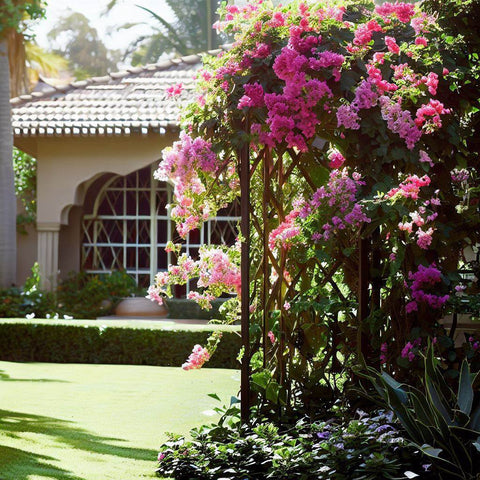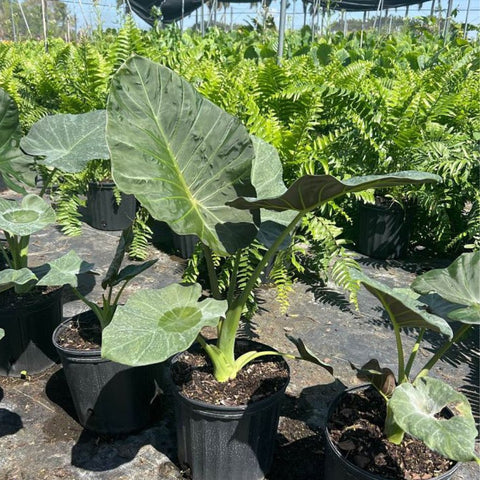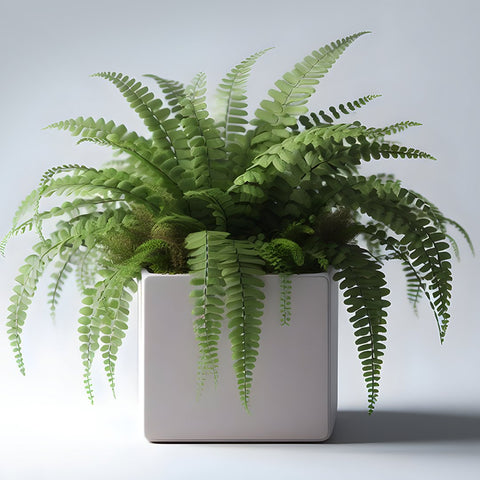Introduction
Welcome to a verdant journey, where gardens teem with melody and motion as creatures large and small find refuge among blossoms and leaves. Creating a spring habitat garden is not merely an exercise in aesthetics; it’s an homage to the vibrant web of life that sustains our planet. As budding gardeners or seasoned horticulturists at Plantology, we understand the sheer pleasure that comes from witnessing nature unfold right in your backyard. A habitat garden can transform a mundane space into a lively ecosystem, inviting butterflies, bees, birds, and beneficial insects to call it home. Today, we’ll explore how to create such a haven, incorporating diverse plant species and strategic garden designs.

Understanding the Basics of Habitat Gardens
What is a Habitat Garden?
A habitat garden is a thoughtfully designed space that provides the necessary resources for local wildlife to thrive. This includes food, water, cover, and places to raise young. Such gardens are structured to replicate natural ecosystems, offering continuous resources for wildlife throughout the seasons.
The Ecological Benefits of Habitat Gardens
Enhancement of Biodiversity
By supporting a variety of plant species, habitat gardens contribute significantly to ecological diversity. The interdependence among plants and wildlife encourages a balanced ecosystem, where each species has a role.
Support for Pollinators and Native Species
Pollinators such as bees, butterflies, and hummingbirds are crucial for the propagation of many plant species. Habitat gardens provide these essential creatures with reliable sources of nectar and pollen, helping sustain their populations.
Planning Your Spring Habitat Garden
Assessing Your Space
Before diving into plant selection, take stock of your available space. Consider factors such as sunlight exposure, soil type, and existing vegetation. Determine how much room you have to work with, as this will inform your plant choices and garden design.

Setting Goals for Your Garden
What do you hope to achieve with your habitat garden? Do you wish to attract specific wildlife like birds or insects? Or perhaps you aim to enhance the natural beauty of your space while contributing to local biodiversity? Identifying your priorities will guide your planning process.
Choosing the Right Plants for Your Garden
Plant selection is key to a successful habitat garden. Opt for native species whenever possible, as these plants are already adapted to your local climate and conditions. Native plants provide the best resources for local wildlife.
- Agapanthus (Lily of the Nile Blue) is a beautiful choice, offering striking blooms that attract pollinators.
- Consider incorporating a range of trees, such as the Alexander Palm, which can provide cover and nesting sites for birds.
Structuring Your Garden
Layered Planting
Create a multi-layered garden with ground covers, understory plants, and canopy trees to offer diverse microhabitats. This mimics the structure of a natural forest, supporting various wildlife species.
Water Features
Incorporate a small water feature, such as a birdbath or a shallow pond, to provide water for drinking and bathing, as it is an essential resource for wildlife.

Implementing Your Habitat Garden Design
Preparing the Soil
Healthy soil is the foundation of strong plants. Enhance your soil with organic matter, such as compost or mulch, to improve its structure and nutrient content.
Planting Techniques
When planting, follow spacing guidelines to avoid overcrowding. This ensures each plant has sufficient access to resources and supports healthy growth.
Care and Maintenance
Regularly mulch to retain soil moisture and suppress weeds. Implement natural pest control techniques, encouraging predatory insects to manage pest populations.
Supporting Wildlife with Your Habitat Garden
Providing Food Sources
Select plants that offer flowers for pollinators and fruit or seeds for birds and mammals. Add feeders and birdhouses to supplement natural food supplies.
Creating Shelter
Incorporate features such as brush piles, rock formations, or small thickets where wildlife can take refuge from predators and extreme weather.
Maintaining Your Habitat Garden
Monitor plant health and address any issues promptly. Regular pruning will encourage vigorous growth and prevent diseases. Allow leaf litter to accumulate in some areas to provide habitat for insects and ground-dwelling creatures.

Enhancing Your Garden with Plantology Products
At Plantology, we offer a wide selection of plants perfect for enhancing your habitat garden. Our Adonidia Palm varieties add a tropical flair while providing essential cover for wildlife.
Explore more palm options here.
Conclusion
Creating a spring habitat garden is a rewarding endeavor that not only beautifies your landscape but also nurtures the biodiversity essential to our planet’s health. By understanding the needs of local wildlife and integrating diverse plant species, you can cultivate an oasis that harmonizes nature’s rhythms with your own space. Remember, every plant choice is an opportunity to bolster local ecosystems. Begin your garden transformation with Plantology’s curated offerings to elevate your garden into a vibrant habitat.
Start exploring our range of plants today and take the first step towards a flourishing habitat garden by visiting our full catalog.
Deep Dive into Plant Selection for Optimal Habitat Gardens
The Importance of Native Plants
When designing a habitat garden, selecting native plants is paramount. Native species are adapted to the local climate, soil, and regional wildlife. These plants offer the ideal resources that local wildlife rely on for survival, thus playing a critical role in maintaining biodiversity. For example, a native Asclepias tuberosa, commonly known as the Butterfly Milkweed, serves as an excellent host plant for monarch butterflies.
Diverse Plant Types and Their Roles
Creating a diverse habitat garden involves integrating various plant types, each contributing uniquely to the ecosystem:
- Grasses: Native grasses, such as Andropogon gerardii (Big Bluestem), provide essential cover and nesting material for birds and small mammals.
-
Shrubs: Shrubs like the Symphoricarpos albus (Common Snowberry) offer berries for food and dense foliage for shelter.

- Trees: Canopy trees such as the Quercus alba (White Oak) sustain a wide variety of wildlife, offering food, shelter, and nesting sites.
- Wildflowers: In addition to their aesthetic appeal, wildflowers like Rudbeckia hirta (Black-eyed Susan) are vital for pollinator sustainability.
Advanced Design Elements for Habitat Gardens
Creating Microhabitats
Diverse plant structuring allows the creation of microhabitats within your habitat garden. This can be achieved through:
- Edge Habitats: Transition zones between different ecosystems, such as where forest meets meadow, are richer in species diversity. Encourage these edges in your garden design.
- Layering: Vertical layering with groundcovers, understory plants, and taller canopy plants create multiple niches for various creatures.
Integrating Natural Features
Natural features like logs, rocks, and water elements can transform your garden into a thriving ecosystem, offering habitats for amphibians, reptiles, insects, and birds. A strategically placed pile of rocks can act as a safe space for small mammals and reptiles, and logs can serve as breeding grounds for beneficial fungi and insects.
Sustainable Practices
Adopt sustainable gardening practices to enhance your habitat garden's ecology:
- Water Conservation: Implement drip irrigation systems and collect rainwater to minimize water usage while keeping your plants hydrated.
- Organic Practices: Avoid synthetic fertilizers and pesticides. Engage in companion planting and introduce beneficial insects, like ladybugs and lacewings, for natural pest control.

Year-Round Supporting Strategies for Wildlife
Seasonal Plantings
To maintain a food source year-round, incorporate a variety of plant species that flourish in different seasons. Consider these examples:
- Spring: Integrate early bloomers like Corydalis solida to offer early season nectar for pollinators.
- Summer: Plants like Echinacea purpurea (Purple Coneflower) provide continuous flowering and attract a myriad of insects.
- Autumn: Late bloomers and berry-producing shrubs offer sustenance as other plants begin dormancy.
- Winter: Evergreens and berry-filled bushes, such as Ilex verticillata (Winterberry), provide sustenance and shelter when resources are scarce.
Supplementary Habitat Features
Help wildlife thrive by adding supplementary features, such as:
- Birdhouses and Bat Boxes: Promote nesting and roosting opportunities by strategically placing boxes throughout your garden.
- Pollinator Hotels: DIY projects like pollinator houses attract solitary bees and other beneficial insects, providing them with safe refuges to nest and lay eggs.
Monitoring and Maintaining Your Habitat Garden
Observing Wildlife Activity
Regularly observe the wildlife that visits your garden. Monitoring allows you to identify which plants and features are most beneficial and highlight areas needing improvement. Consider maintaining a wildlife journal, noting species sightings, nesting behaviors, and plant interactions.

Adaptive Management
Your garden should evolve with the needs of the wildlife it supports. Be prepared to make adjustments based on your observations. If certain plants are not thriving or attracting wildlife, consider replacing them with more suitable species based on current garden conditions.
Community Engagement and Education
Share your experiences and knowledge with friends, neighbors, and local gardening communities. Hosting garden tours or workshops can foster a greater understanding and appreciation for habitat conservation among your community members.
Leveraging Technology
Use apps and online platforms to identify plant species and manage your garden effectively. Participate in citizen science projects, contributing observations to broader environmental research initiatives.
Conclusion & Call to Action
Embarking on the journey of creating a habitat garden is both an adventure and a responsibility. As you cultivate and maintain your garden oasis, you contribute significantly to preserving local ecosystems and enhancing biodiversity. Begin this transformative journey with care, patience, and passion. With Plantology’s extensive range of native and wildlife-friendly plants, you can seamlessly integrate these principles into your garden design.

Take the first step toward creating a thriving habitat in your backyard. Explore our carefully curated selection of plants at Plantology and transform your garden into a lively ecosystem where nature and nurture coalesce harmoniously.
```





























Comments (0)
There are no comments for this article. Be the first one to leave a message!